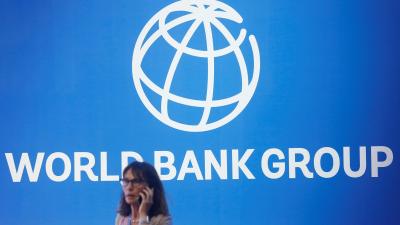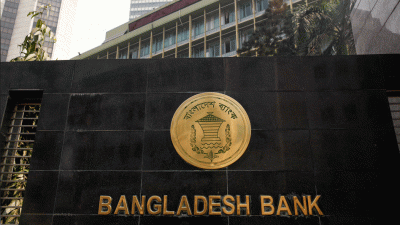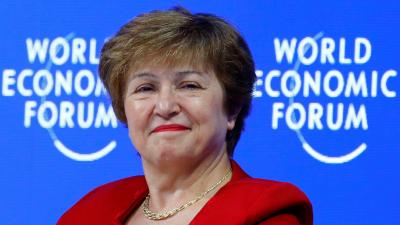 Bangladesh's exports to the Asian markets registered nearly 93% growth in seven years, due mainly to competitive prices, government’s export handouts and market diversification drives of exporters.
Bangladesh's exports to the Asian markets registered nearly 93% growth in seven years, due mainly to competitive prices, government’s export handouts and market diversification drives of exporters.
While the export expansion is better than many Asian economies, lack of product diversification and bilateral trade agreement is thwarting the expected growth, say analysts.
Receipts from merchandise export to Asian countries increased by 20.52% to $4.95 billion in the last fiscal year, according to data of Export Promotion Bureau. The earnings in 2011-12 FY was to the tune of $2.57 billion.
Bangladesh's exports to India stood at $1.25 billion in last fiscal year, up by 42.91%, which was $873.27 million in the previous fiscal. The country's exports to Japan rose by 20.66% to $1.36 billion, while exports to China by 19.60% to $831.20 million and to Korea by 45.44% to $370.65 million.
Most of Bangladesh's export earnings are concentrated on the four countries, which contributed $3.82 billion or 77.17% of $4.9 billion in the fiscal year.
According to Export Promotion Bureau (EPB) data, the country's export earnings from Asian nations stood $4.96 billion in FY19, which is 12.23% of the total exports.
In the FY18, exports to Asian countries were worth $4.11 billion or 10.14% of total exports.
Despite the highest population density in Asia, the European Union (EU) countries imported Bangladeshi goods worth 56.38% ($19.35bn), while the American regions imported goods worth $8.92 billion or 22.01% of the total merchandise export in last fiscal year.
WHY EXPORTS TO ASIA RISING
Duty-free market access, cash incentives and government initiatives to diversify markets have been attributed to the rise in the exports to the Asian countries.
Besides, manufacturers' drives to attract new buyers have played a big role.
“China and India import lion share of Bangladeshi goods as here we enjoy duty-free market access. The government also gives 4% cash incentives for exports to non-traditional market,” said former BGMEA senior vice president Faruque Hassan.
Moreover, there is a strong drive on the part of the government and manufacturers to attract more buyers from the region, he adds.
As a result, Bangladesh’s export earnings from Asian markets are increasing gradually and getting stronger foothold in the region, says Hassan, the top official of Giant Group.
Now, the apparel exporters enjoy 4% cash incentive for exports to non-traditional markets, while 1% incentive for traditional markets for the current fiscal year.
Cash incentive for non-traditional export markets has had positive impact on exports and it needs to be continued for further growth in the regional market, according Ahsan H Mansur, executive director of think tank Policy Research Institute (PRI).
But the government should analyse country- and product-wise impact of the incentives to get the best out of it.
WHY ASIA IS IMPORTANT
On the other hand, South Asia holds on to its top spot as the world’s fastest growing region, with growth set to step up to 7% in 2019, then 7.1% in 2020 and 2021, World Bank data show.
On the other, 60% or 4.5 billion of the total population live in Asia, of which China and India combine to 2.7 billion people, together accounting for 36% of the total global population, as said by the World Economic Forum.
“Since in Asia reside 60% of world total population, there is a huge scope for the Bangladesh to grow in the export market especially through apparel and clothing goods exports,” says former caretaker government advisor AB Mirza Azizul Islam.
China, which alone holds 18% of world population, and India are major export destination for Bangladesh, while Japan is another potential market as it has more disposable income, says the economist.
Besides, Bangladesh needs to increase exports to the Asian countries as well as in the world to sustain its high growth and reach its full economic potential, he added.
Bangladesh sets a target to attain 8.2% GDP growth for the current fiscal year, while it attained 8.13% growth in the last fiscal year.
Export shares in South Asia are below the world average. The world average exports to GDP is 22% but goods exports are only around 13% in Bangladesh.
“South Asia’s exports performance dropped in the last few years to languish far below its potential and while growth still looks robust we are concerned about whether this can hold up over the longer term,” said Hartwig Schafer, World Bank Vice President for the South Asia Region, during a report launching in April this year.
To ensure long-term growth, the region needs to integrate further into international markets to sustain its upward growth trajectory, create more jobs, and boost prosperity for its people, he added.
CHALLENGES AND WAYS FORWARD
“Compared to western region, regional trade barriers are much higher in Asian countries mostly in South Asia," said former World Bank Dhaka office lead economist Zahid Hossain.
Moreover, he said, customs regulation was not harmonized in the region and tariff and non-tariff barriers between trade partners were very high.
To increase exports to Asian nations, Bangladesh has to remove the barriers to diversifying products and move to bilateral trade agreement and regional partnership, Zahid suggests.
He also finds it necessary to be integrated with the regional alliances and develop human resources.
On the whole, there must be political willingness in doing business and integration of regional trade, he added.
However, the business people have called for bringing reforms in the trade regulations to harmonize the trade regime and improve ease of doing business.
“If the ongoing reforms to improve ease of doing ranking is done, investments will grow, which will increase the production capacity pushing the exports earnings up,” says Mohammad Hatem, First Vice President of BKMEA.
Communication and connectivity with the region was now very weak, which needed to be improved with liberalization of trade policy, Hatem stated.
 Business
Business
41363 hour(s) 29 minute(s) ago ;
Morning 06:23 ; Sunday ; Jul 06, 2025
Exports to Asian markets double in 7 years
Send
Ibrahim Hossain Ovi
Published : 04:00, Oct 10, 2019 | Updated : 04:00, Oct 10, 2019
Published : 04:00, Oct 10, 2019 | Updated : 04:00, Oct 10, 2019
0 ...0 ...
/hb/
Topics: Top Stories
- KOICA donates medical supplies to BSMMU
- 5 more flights to take back British nationals to London
- Covid19: Rajarbagh, Mohammadpur worst affected
- Momen joins UN solidarity song over COVID-19 combat
- Covid-19: OIC to hold special meeting
- WFP begins food distribution in Cox’s Bazar
- WFP begins food distribution in Cox’s Bazar
- 290 return home to Australia
- Third charter flight for US citizens to return home
- Dhaka proposes to postpone D8 Summit
Unauthorized use of news, image, information, etc published by Bangla Tribune is punishable by copyright law. Appropriate legal steps will be taken by the management against any person or body that infringes those laws.
Bangla Tribune is one of the most revered online newspapers in Bangladesh, due to its reputation of neutral coverage and incisive analysis.
F R Tower, 8/C Panthapath, Shukrabad, Dhaka-1207 | Phone: 58151324; 58151326, Fax: 58151329 | Mob: 01730794527, 01730794528






